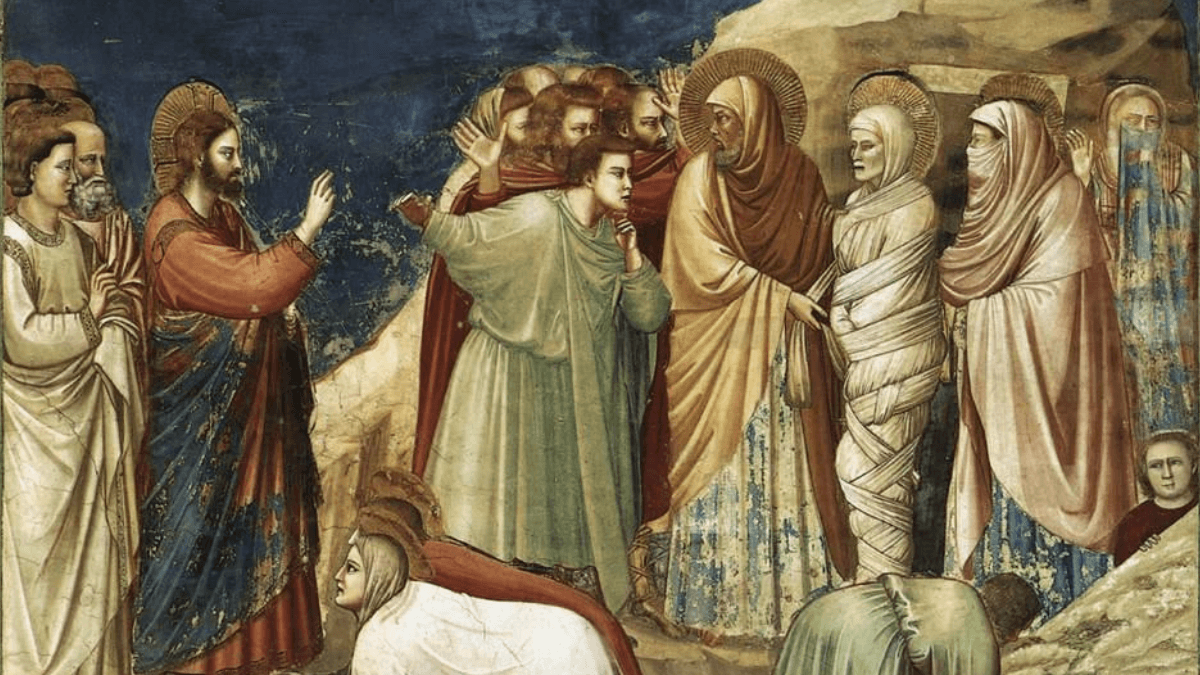On the Back Porch
Reading, pondering and studying God’s Word is sometimes best done “on the back porch.” Each week we will try to offer something for you and your “back porch time.”

The Raising of Lazarus

5th Sunday of Lent
The account of the raising of Lazarus from the dead is told in John 11:1-45. In the telling, St. John offers us another sign (as he calls miracles). While the story stands on its own, it is part of a larger narrative’s flow in which Jesus is revealed by signs. The account follows the story of the healing of the man born blind (John 9:1-41). In the commentary on that gospel it was explained that the miracles (called “signs” / semeia) in the gospel point beyond themselves to the divine – not just the divine as a vague power, but to a person. The person who restored sight to the man blind since birth. The one who proclaims: “I have come that they might have life and have it to the full” (John 10:10)
Chapter 10 continues the revelation of Jesus – and like the chapters before it, also reveals faith among people in the way they respond to the signs – or sin in the way they fail/refuse to respond to the sign. In John 10, Jesus reveals/identifies himself as the good shepherd (10:11,14) promised by Zechariah 34 who would bring the lost sheep of Israel back into the covenant relationship. But we see the hard hearts in scene after scene. Despite all the signs, there is a hardness of heart that always wants more signs before the commitment can be given. It is in this context that returning someone from the dead establishes the ultimate “fish or cut bait.”
In the Gospel we see Jesus, holding two grief-stricken sisters in his arms, and telling them with absolute certainty that he is the Resurrection and the Life. Jesus proclaims the truth of eternal and abundant life in bold, unapologetic tension with his own inner turmoil as he came face-to-face with the death of his friend. “When Jesus saw her weeping and the Jews who had come with her weeping, he became perturbed and deeply troubled…and Jesus wept.” (John 11:33,5).
It is not just the dead who suffer. It is everyone around them who also suffers. There are aspects of the story that pull us to consider them more deeply, there is one part of the story that stands clear. It is a story well-suited for pandemics, plagues, death, doom, flood, fire, famine, and all manner of disease, disaster and human folly. It is an account that shows grief taking hold of Jesus, taking hold of God and breaking him down to tears. It is the clearest, most human, revelation of the Divine. And Jesus wept. Weeping in the same moment he proclaims he is the Resurrection and the Life. Weeping, for while God will have the last word, in this moment death is speaking.
This is a gospel that holds clear the promise of resurrection and joy but does not race past the moment when Mary and Martha are grieving. He weeps for Lazarus and he joins the sisters in their grief. His kindness calls us all into the holy vocation of empathy, compassionate suffering, and mourning.
You can find the full text of the Sunday gospel here. And if you are interested in a detailed commentary, one is available here.
The first reading is from the Prophet Ezekiel. Our passage is from a section that is a message of Hope to a people who were hard-hearted, strayed from the covenant into idolatry, and as a result were taken into exile in Babylon. The first reading is like the gospel but instead of raising one man, the Lord resuscitates a whole nation of people – raising them from the graves of their exile. This video will give you an introduction to the Book of the Prophet Ezekiel